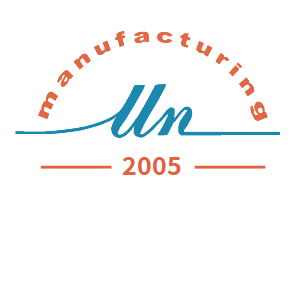Lab Introduction
The Laboratory of Micro/Nano Manufacturing Technology (MNMT) of Tianjin University
The Laboratory of Micro/Nano Manufacturing Technology (MNMT) of Tianjin University was founded in 2005. It has been mainly engaged in fundamental research and application development of Optical design, manufacturing and measurement, Ultra-precision machining and micro/nano fabrication, Injection and glass molding, Design and manufacturing of biological implants, Focused Ion Beam Nanofabrication Technology. MNMT is recognized as one of the leading research organizations in micro/nano manufacturing worldwide.
Lab Introduction
- Optical design, manufacturing and measurement
- Ultra-precision machining and micro/nano fabrication
- Injection and glass molding
- Design and manufacturing of biological implants
- Focused Ion Beam Nanofabrication Technology
Optical design, manufacturing and measurement
Ultra-precision machining of freeform surfaces has become the core technology for developing the advanced optical, biomedical, communications, and microelectronics fields. The required surface form continues to become more complex as the demand from various systems. MNMT has been able to design, manufacture and measurement for ultra-precise freeform surfaces for significant amount of industrial partners from different countries and regions. Typical optical freeform components, such as compound eyes, spiral mirrors, aspheric lens arrays, sinusoidal surfaces have been developed for wide applications like imaging, illumination and AR/VR systems.
Ultra-precision machining and micro/nano fabrication
MNMT has the capability to manufacture highly precise freeform surfaces. The advantages of ultra-precision machining include superior accuracy and stability. A wide range of materials can be ultra-precision machined, such as aluminum, copper, nickel, gold, germanium, ZnSe, ZnS, and PMMA. The extent of ultra-precision manufacturing includes all kinds of plane mirrors, spherical mirrors, concave/convex aspheric mirrors, off-axis aspheric mirrors, aspheric lens arrays, Fresnel lenses and mirrors, micro-groove arrays, multi-faceted prisms, optical molds, and other components of high precision devices. Applications for these elements include all kinds of imaging, illumination, AR/VR systems.
Numerical simulation and micro/nano cutting tests are used to reveal the material removal mechanism at nanometric scale. Systematic studies are conducted on the fundamental issues of ultraprecision machining, including the deformation and stress fields, material defects, surface generation and tool wear. These fundamental studies provide guidelines for optimizing the process parameters and improving the production efficiency. In addition, effective approaches are developed for typical difficult-to-cut materials. For example, ion implantation technique is employed to soften the surface layer of brittle materials. As the surface fracture is reduced, tool life can be prolonged. For the ferrous metals, multi-degrees of freedom ultrasonic vibration assisted machining is investigated to depress the graphitization of diamond tool, which makes it possible to realize the steel mold die without the nickel-phosphorus plating.
Injection and glass molding
With the rapid development of biological medicine, optical communication, micro-projection and consumer electronics, the demand for optical components such as spherical and aspheric lenses, microlens arrays, cylindrical mirrors and freeform components is increasing. Ultra-precision micro-injection molding and glass molding technology are usually used for producing polymer materials and low melting point of glass materials. These technologies have the advantages of low manufacturing cost, short production cycle, simple molding process and easy product quality assurance. MNMT uses self-designed ultra-precision molds to conduct micro-injection molding and molding mechanism study and process exploration of various high-precision and complex surface components. In micro-injection molding, MNMT can realize high precision micro-structure mold processing, automatic adjustment of pressure waveform and measurement time in the process, automatic inspection of finished products, to ensure that the products can be processed in different processing environments with stable quality. In glass molding, the centre can realize ultra-precision hard and brittle mold machining and coating, various visible and infrared sulfur glass molding, aspheric and free-form lens molding, control of molding process and production line.
Design and manufacturing of biological implants
There is an increasing demand for total knee arthroplasty in global area, bioceramics have good wettability, high wear resistance, high hardness and good biocompatibility, therefore the bioceramic is recognized as the next generation of material for total knee joint. The main raw material of artificial knee joints is zirconia bioceramics. Due to its hard and brittle nature, the machining efficiency of traditional processing is low with serious tool wear, leading to the difficulties in guaranteeing the joints performance. Because of the large size and various curvature, the measurement of its surface is also a technical difficulty. Take the study of ceramic total knee joint as an example, MNMT proposes a unified description method of modeling based on T-spline and a new machining process of “low temperature sintering-rough machining-high temperature sintering-finish machining”. An integrated machining method of diamond grinding and polishing is adopted to improve the machining efficiency and quality of the knee joints. A series of measurement methods is combined to realized the panoramic measurement of the knee joints. A face tracking measurement is also developed based on the point measurement system.
Focused Ion Beam Nanofabrication Technology
Focused Ion Beam (FIB) processing is an important nanofabrication technology. The ion source is accelerated by the electrostatic lens and focused into an ion beam at nano scale to achieve the high-precision processing of nanostructures. MNMT focuses on the FIB processing mechanism, processing technology, and functional device fabrication.
The FIB research areas include:
1) Fabrication of new wide band gap (WBG) semiconductor devices
2) Characterization of Raman and Photoluminescent spectra
3) Ion beam processing mechanism
4) Fabrication of micro-nano optical functional devices
5) Micro-tool fabrication and nano-cutting under SEM online observation
